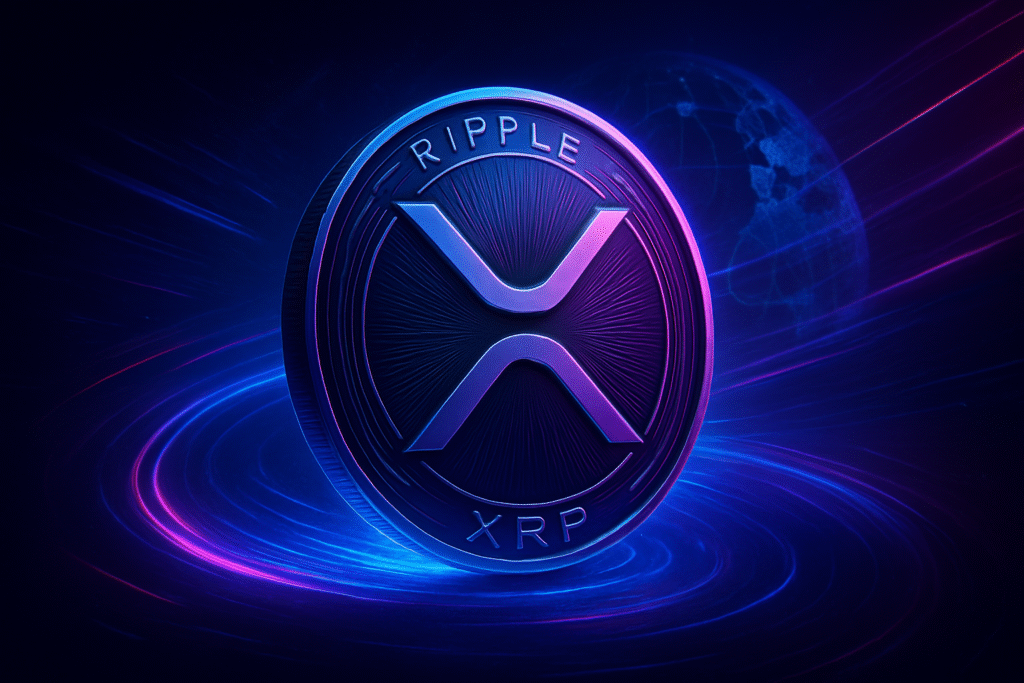Introduction to XRP: The Bridge Currency for Global Payments
XRP, the native token of the XRP Ledger (XRPL), is a top cryptocurrency designed for fast, low-cost cross-border payments. Launched in 2012 by Ripple Labs, XRP aims to revolutionize how financial institutions transfer money globally. With a market cap of over $131 billion as of June 2025, XRP ranks #4 on CoinMarketCap, making it a mainstay in the crypto ecosystem. CoinMarketCap(https://coinmarketcap.com/currencies/xrp/)
In this guide, we’ll explore what XRP is, how it works, its real-world applications, and whether it’s a good investment in 2025. Whether you’re a beginner or a seasoned investor, this blog will help you understand XRP’s potential.
What Is XRP and How Does It Work?
The XRP Ledger (XRPL): A Decentralized Blockchain
The XRP Ledger is an open-source, permissionless blockchain created by Jed McCaleb, Arthur Britto, and David Schwartz. Unlike Bitcoin’s proof-of-work or Ethereum’s proof-of-stake, XRPL uses a unique Ripple Protocol Consensus Algorithm (RPCA). Transactions are validated by a network of trusted nodes, requiring at least 80% agreement for inclusion. This makes XRPL:
- Fast: Transactions settle in 3–5 seconds.
- Low-Cost: Fees are as low as $0.0002 per transaction.
- Scalable: Handles 1,500 transactions per second.
- Eco-Friendly: Carbon-neutral compared to energy-intensive mining.
XRP’s Role as a Bridge Currency
XRP acts as a “bridge” for converting hard-to-match currencies (e.g., shekels to shillings) without direct market makers. For example, a bank in Japan can send yen, convert it to XRP, and then convert XRP to rupees for a recipient in India—all in seconds. This is powered by RippleNet, Ripple’s global payment network used by over 100 financial institutions.
Key Use Cases of XRP in 2025
XRP’s utility extends beyond payments. Here are its top applications:
- Cross-Border Payments: XRP’s primary use case is enabling real-time, low-cost remittances for banks and payment providers via RippleNet.
- Decentralized Finance (DeFi): XRPL’s native decentralized exchange (DEX) supports DeFi applications like liquidity provision and token swaps.
- Tokenization: Developers use XRPL to tokenize real-world assets, from stocks to real estate, for secure trading.
- Central Bank Digital Currencies (CBDCs): Ripple is exploring CBDC solutions, leveraging XRPL’s scalability.
- Stablecoins: Ripple’s RLUSD stablecoin, launched in 2025, complements XRP for stable transactions.
Recent developments, like the XRPL EVM sidechain mainnet release planned for Q2 2025, will expand XRP’s functionality, attracting more developers and use cases.
XRP Price Trends and Market Insights
Current XRP Price (June 2025)
- Price: $2.25 USD
- 24-Hour Trading Volume: $2.19 billion
- Market Cap: $131.06 billion
- Circulating Supply: 58.82 billion XRP (59% of 100 billion total supply)
- All-Time High: $3.84 (January 2018)
XRP’s price has risen 356.66% in the past year, driven by Bitcoin’s bull run and Ripple’s strategic partnerships. Analysts predict XRP could reach $2.34 by September 2025, with a potential low of $2.13.
Factors Influencing XRP’s Price
- Market Trends: XRP correlates with Bitcoin, which hit $110,000 in 2025, boosting altcoins.
- Regulatory Clarity: The SEC lawsuit against Ripple, ongoing since 2020, may resolve in 2025. A favorable outcome could drive adoption.
- Adoption: Partnerships with firms like VivoPower, deploying $100M in XRP, signal growing enterprise use.
- Supply Dynamics: With 70% of XRP held by top 10 holders (e.g., Binance), controlled releases from escrow impact price stability.
Is XRP a Good Investment in 2025?
Pros of Investing in XRP
- Strong Utility: XRP’s real-world use in payments gives it intrinsic value.
- Institutional Backing: Over 100 institutions partner with Ripple, enhancing credibility.
- Scalable Technology: XRPL’s speed and low costs position it for mass adoption.
- Bullish Sentiment: Posts on X highlight optimism, with users citing ISO 20022 adoption as a catalyst.
Risks to Consider
- Regulatory Uncertainty: The SEC lawsuit could impact XRP’s classification as a security.
- Centralization Concerns: Critics note XRPL’s reliance on trusted validators, unlike fully decentralized networks.
- Competition: Other payment-focused coins (e.g., Stellar) challenge XRP’s market share.
- Supply Concentration: Large holder control could lead to price volatility.
Investment Tip: Diversify your portfolio and use cold storage (e.g., Ledger) for security. Consult a financial advisor before investing.
How to Buy and Store XRP
- Choose an Exchange: Buy XRP on platforms like Coinbase, Binance, or eToro. Check regional availability due to regulatory restrictions.
- Set Up a Wallet: Store XRP in secure wallets like Ledger (hardware) or Crypto.com (software).
- Place an Order: Search for XRP, select your amount, and complete the purchase.
- Stay Informed: Monitor XRP news on CoinGecko or CoinMarketCap for price updates.
The Future of XRP: What’s Next?
XRP’s roadmap for 2025 includes:
- EVM Sidechain: Enhancing DeFi and smart contract capabilities.
- Stablecoin Expansion: RLUSD adoption could stabilize XRP’s ecosystem.
- Regulatory Resolution: A potential end to the SEC lawsuit may unlock institutional investment.
- ISO 20022 Compliance: Alignment with global financial standards could drive adoption.
With over 220,000 XRP holders and a growing developer community, XRP is poised for growth, but its success hinges on regulatory clarity and market dynamics.
Conclusion: Why XRP Matters in 2025
XRP’s blend of speed, scalability, and real-world utility makes it a compelling cryptocurrency for investors and institutions alike. As Ripple expands its network and resolves regulatory hurdles, XRP could cement its role in global finance. Stay updated with trusted sources like XRPL.org and diversify your investments to mitigate risks.
Ready to explore XRP? Share your thoughts in the comments or follow us on X for the latest crypto insights!
Disclaimer: This blog is for educational purposes only and not financial advice. Cryptocurrency investments carry risks. Always conduct your own research.
What is XRP used for?
XRP facilitates fast, low-cost cross-border payments, DeFi, and asset tokenization on the XRP Ledger.
Is XRP decentralized?
While XRPL is permissionless, its reliance on trusted validators makes it less decentralized than Bitcoin.
Where can I buy XRP?
XRP is available on exchanges like Coinbase, Binance, and eToro, subject to regional regulations.



